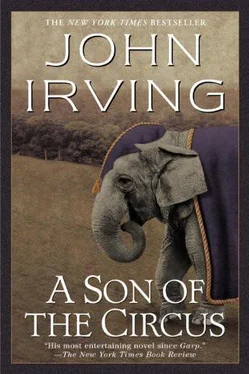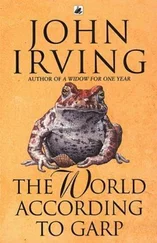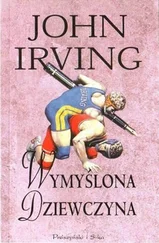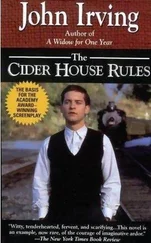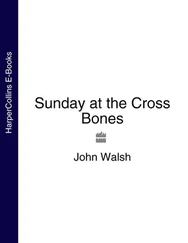“Miss Tanuja has been with us for many years,” Father Julian whispered.
“I see,” said Dr. Daruwalla, but Martin Mills merely stared.
Then they passed a classroom of smaller children in I-3. The kids were napping with their heads on their desks—either “midgets” or “sub-midgets,” Farrokh guessed.
“Do you play the piano?” the Father Rector was asking the new missionary.
“I always wanted to learn,” Martin said. Maybe the madman could practice the piano between bouts of orienting himself in The Times of India , Dr. Daruwalla thought.
And to change the subject from his lack of musical skills, the scholastic asked Father Julian about the sweepers, for there were everywhere about the mission an abundance of men and women who were sweeping—they also cleaned the toilets—and the missionary assumed that these sweepers were people from the untouchable castes.
The Father Rector used the words “bhangee” and “maitrani,” but Martin Mills was a man with more of a mission than Father Julian supposed. Martin asked the Father Rector directly: “And do their children attend this school?” All of a sudden, Dr. Daruwalla liked him.
“Well, no—that wouldn’t be suitable, you see,” Father Julian was saying, but Farrokh was impressed by how gracefully Martin Mills interrupted the Father Rector. The scholastic simply breezed into a description of “rescuing” the crippled beggar and the child prostitute; it was Martin’s one-step-at-a-time method, and the missionary virtually waltzed the Father Rector through the steps. First the circus—instead of begging, or the brothel. Then the mastery of the English language—“so civilizing as to be essential”—and then “the intelligent conversion”; Martin Mills also called this “the informed life in Christ.”
A class of seniors, on recess, was enjoying a savage, silent dirt fight in the courtyard, but Dr. Daruwalla marveled how the Jesuits were undistracted by this minor violence; they spoke and listened with the concentration of lions stalking a kill.
“But surely, Martin, you wouldn’t credit yourself with these children’s conversion?” Father Julian said. “That is, should they eventually be converted.”
“Well, no… what do you mean?” Martin asked.
“Only that I never know if I have converted anyone,” the Father Rector replied. “And if these children were converted, how could you presume it happened because of you? Don’t be too proud. If it happens, it was God. It wasn’t you.”
“Why, no—of course not!” said Martin Mills. “If it happens, it was God!”
Was this “obedience”? Dr. Daruwalla wondered.
When Father Julian led Martin to his cubicle, which Dr. Daruwalla imagined as a kind of prison cell with built-in instruments to chastise the flesh, the doctor continued to roam; he wanted to look at the sleeping children again, because that image of sleeping with his head on his desk was more appealing than anything else he could remember about attending St. Ignatius School—it had been so many years ago. But when he peered into I-3 again, a teacher he hadn’t seen before regarded him sternly, as if his presence in the doorway would disturb the children. And this time the doctor noticed the exposed wiring for the fluorescent lights, which were off, and the exposed wiring for the ceiling fan, which was on. Suspended over the blackboard like a puppet on tangled, immobile strings was yet another statue of the Virgin Mary. From Farrokh’s Canadian perspective, this particular Holy Mother was covered with frost, or a light snow; but it was only rising chalk dust from the blackboard that had settled on the statue.
Dr. Daruwalla amused himself by reading as many printed messages and announcements as he could find. There was a plea from the Social Concern Group—“to help less fortunate brothers and sisters.” Prayers were offered for the Souls in Purgatory. There was the pleasing juxtaposition of the Minimax fire extinguisher that was mounted on the wall beside the statue of Christ with the sick child; in fire-extinguisher language, a short list of instructions was printed next to a page from a lined notebook on which a child’s handwriting proclaimed, “Thanks to Infant Jesus and Our Lady of Perpetual Help.” Farrokh felt somewhat more comforted by the presence of the fire extinguisher. The great stone mission had been erected in 1865; the fluorescent lights, the ceiling fans, the vast network of haphazard wiring—these had been added later. The doctor concluded that an electrical fire was entirely possible.
Farrokh tried to familiarize himself with all the meetings that a good Christian could go to. There was an announced Meeting of Liturgical Readers, and the Meeting of the Members of the Cross—“to make parish members more politically conscious.” The present topic of proposed conversation in the Adult Catholic Education Program was “The Christian Today in the World of Non-Christian Religions.” This month, the Hope Alive Center was conducted by Dr. Yusuf Merchant. Dr. Daruwalla wondered what “conducted by” meant. There was a Get to Know Each Other Party for the Altar Service Corps, which Farrokh suspected would be a grim gathering.
Under the archway of the second-floor balcony, the doctor was struck by the unfinished irregularity of the pieces of stained glass—as if the very notion of God were this fragmented, this incomplete. In the Icon Chapel, the doctor abruptly closed a hymnal upon encountering the hymn called “Bring Me Oil.” Then he read the bookmark that he’d removed from the hymnal; the bookmark celebrated St. Ignatius’s upcoming jubilee year—“a labour of love in building youth for 125 years.” There was also the word “world-affirming”; Dr. Daruwalla had never had the slightest idea what this implied. Farrokh peeked into the hymnal again, but even the name of the thing offended him; it was called the “Song Book of the Charismatic Renewal in India”—he hadn’t known that there was any charismatic renewal! And so he exchanged the hymnal for a prayer book, wherein he looked no further than the opening line of the first prayer: “Keep us, Lord, as the apple of Your eye.”
Dr. Daruwalla then discovered the Holy Father’s Intentions for 1990. For January, it was advised that the dialogue between the Catholic and Anglican communities continue in the quest for Christian unity. For February, prayers were offered for those Catholics who, in many parts of the world, suffered either verbal or physical persecution. For March, the parishioners were exhorted to give a more authentic witness for support of the needy—and fidelity to the poverty of the Gospels. Dr. Daruwalla couldn’t read past March, for the phrase “poverty of the Gospels” stopped him. Farrokh felt surrounded by too much that was meaningless to him.
Even Brother Gabriel’s fastidious collecting of icons meant little to the doctor, and the icon-collection room at St. Ignatius was famous in Bombay. To Farrokh, the depictions were lugubrious and obscure. There was a 16th-century Adoration of the Magi, of the Ukrainian School; there was a 15th-century Decapitation of John the Baptist, of the Central Northern School. In the Passing of Our Lord category, there was a Last Supper, a Crucifixion, a Deposition (the taking of Christ’s body from the cross), an Entombment, a Resurrection and an Ascension; they were all icons from the 14th through the 18th centuries, and they varied among the Novgorod School, the Byzantine School, the Moscow School… and so on. There was one called the Dormition of the Virgin, and that did it for Dr. Daruwalla; the doctor didn’t know what the Dormition was.
From the icons, the doctor roamed to the Father Rector’s office, where something resembling a cribbage board was nailed to the closed door; by means of holes and pegs, Father Julian could indicate his whereabouts or availability—“back soon” or “do not disturb,” “rec. room” or “back late,” “back for supper” or “out of Bombay.” That was when Dr. Daruwalla considered that he should be “out of Bombay”; that he’d been born here didn’t mean that he belonged here.
Читать дальше
